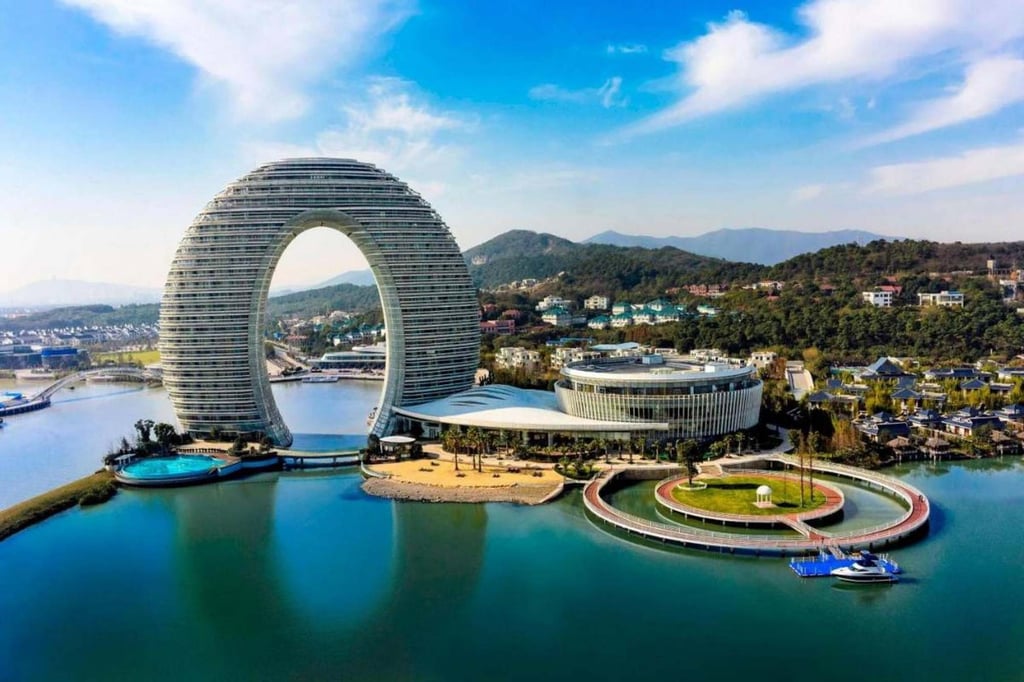7 most unique luxury hotels in China: from Lady Gaga’s birthday spot at Hotel Eclat Beijing and the underwater InterContinental Shanghai Wonderland, to a fairytale dream at The Castle Hotel Dalian

- Pop queen Lady Gaga spent her birthday at Hotel Eclat in Beijing, which has suites themed after Darth Vader, Barbie, Harry Potter and Midnight in Paris
- Commune by the Great Wall in Beijing has villas designed by architects Gary Chang and Kengo Kuma, while Amanyangyun features restored buildings from the Ming and Qing dynasties

As business picks back up and tourists start to return, now is the time to take inventory of the best places and hotels to visit in the region. China is known for its grandeur in buildings, its modern and contemporary designs taking architecture to new frontiers.
Keeping that in mind, we have identified the most unique hotels in the country, which are sure to raise your eyebrows a tad, both in surprise and awe.

Be it a beautiful ring at the centre of a lake, or luxury underground splendour in an abandoned quarry, or the architectural marvel of uprooting and assembling centuries’ old buildings to create a new contemporary hotel, this list is sure to pique your curiosity. Without further ado …
1. Intercontinental Shanghai Wonderland

At least 17 out of 19 stories are underground, of which two are underwater! Located around 30km from Hongqiao Airport, the hotel took shape in an abandoned quarry. It was designed by Martin Jochman and his studio Jade + QA, consisting of 337 guestrooms, and took more than 10 years to build.

The hotel gives off a fantasy film setting vibe and is the most fascinating indoors with all the dark mystery it exhibits.